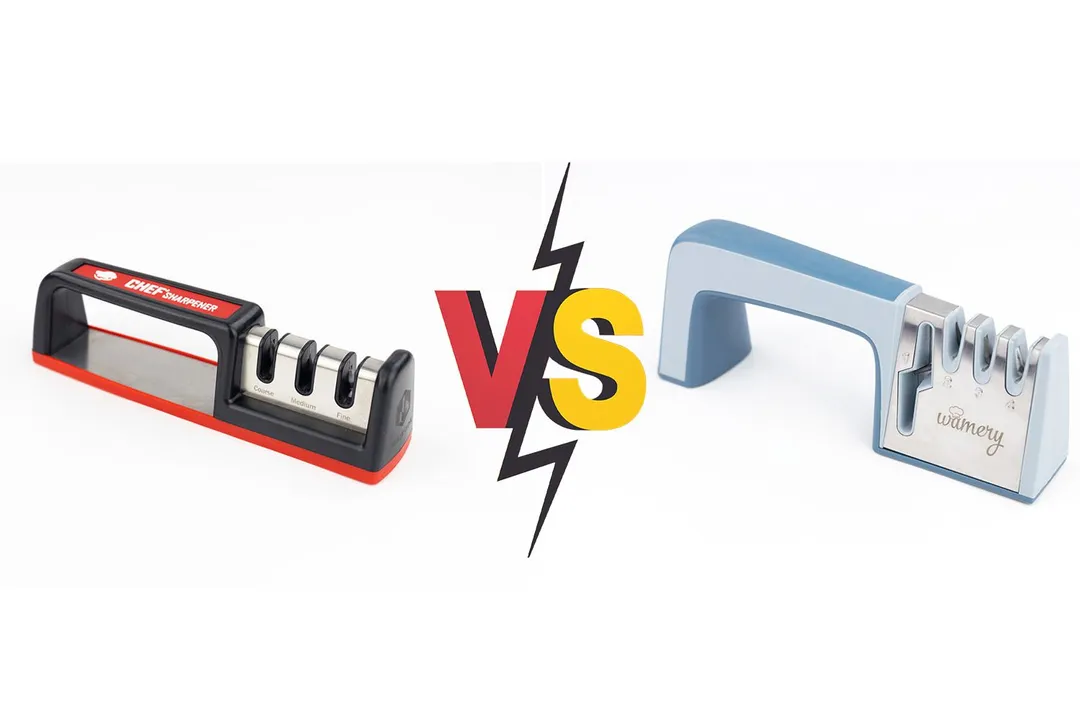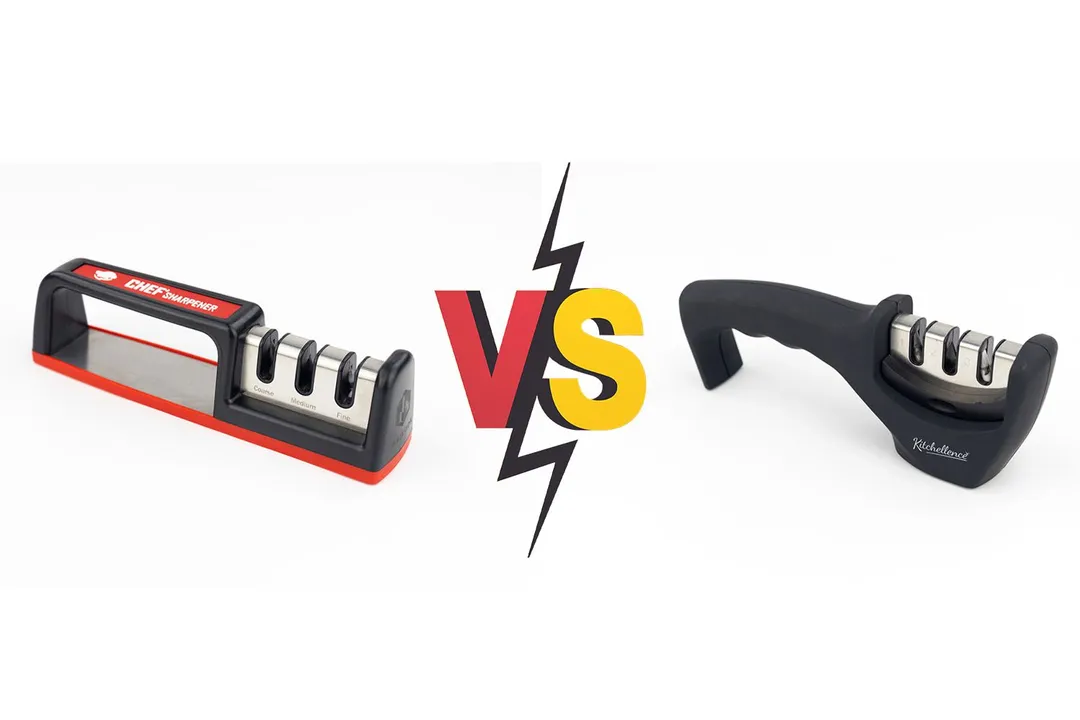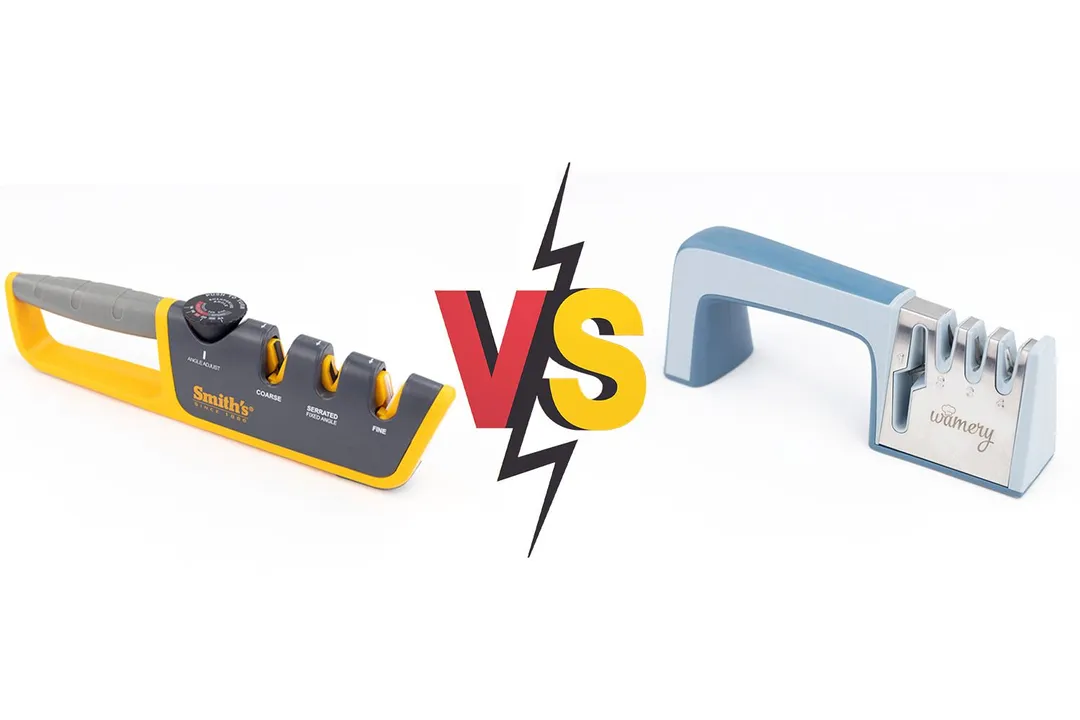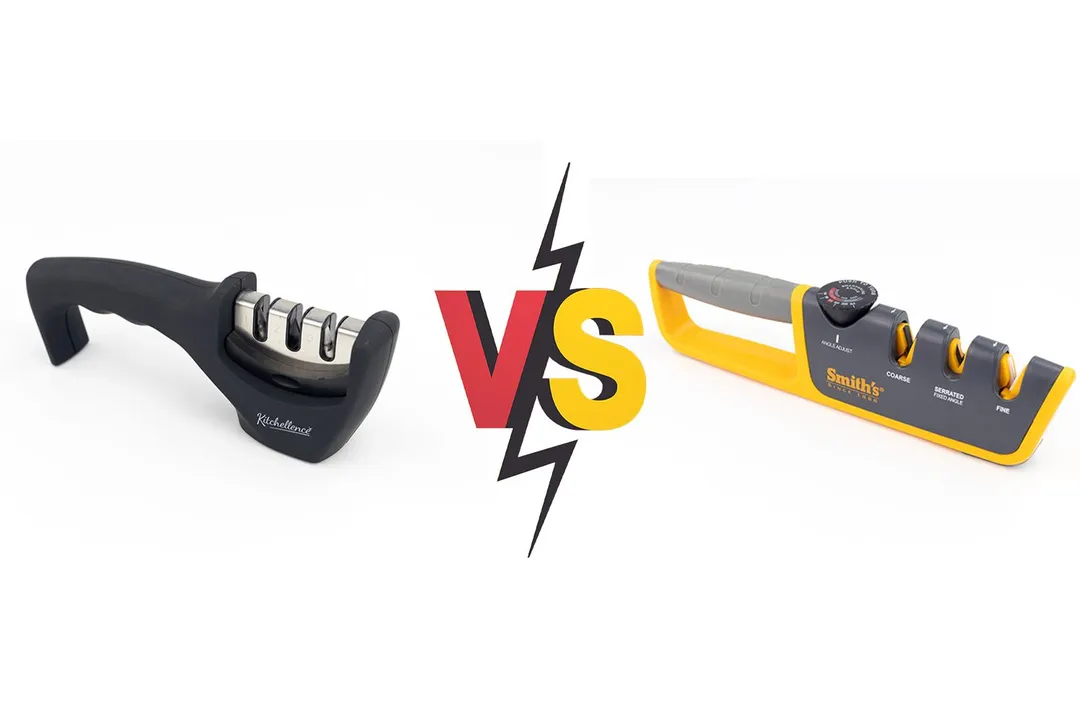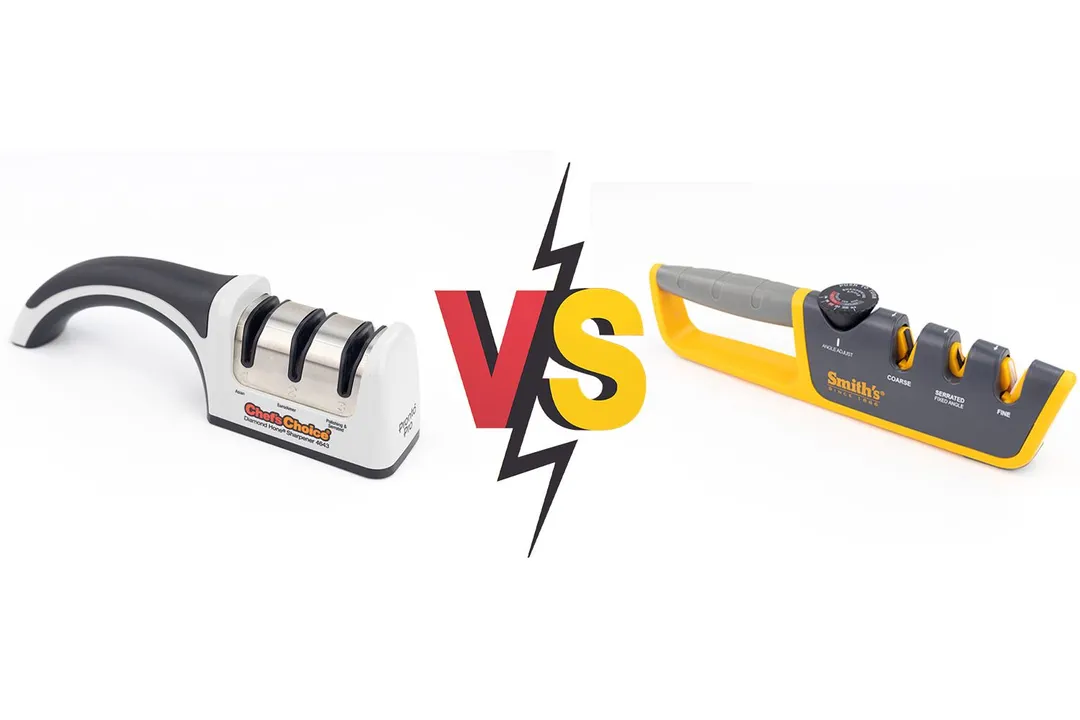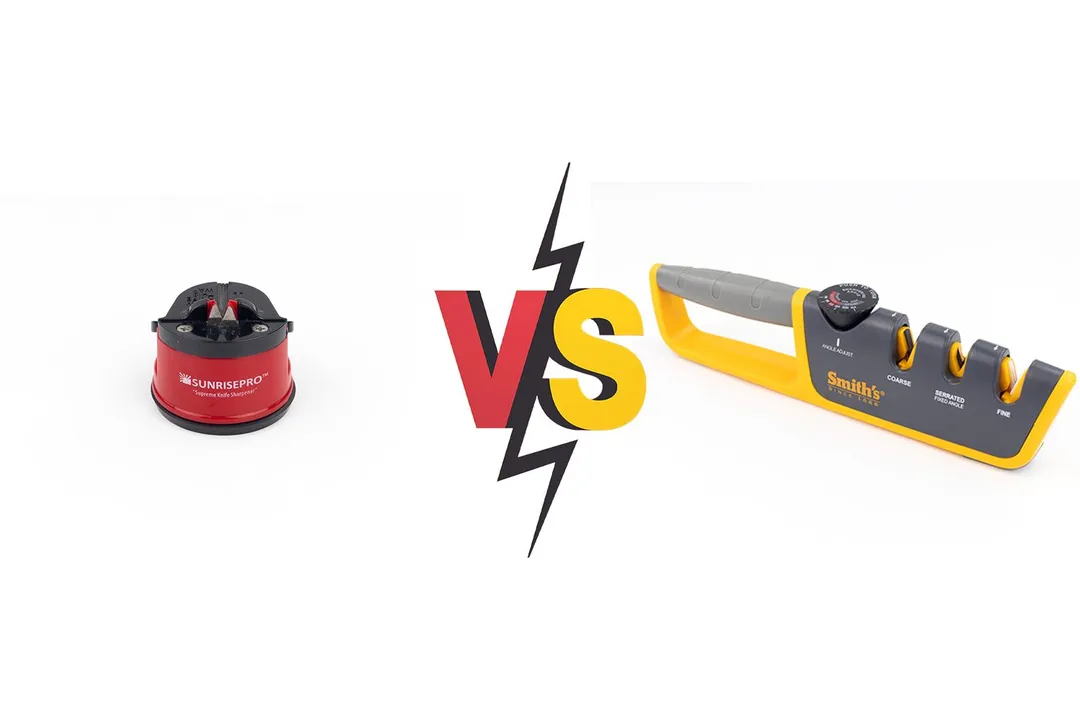Our recommendations are made independently through Research & Testing. We may receive commissions from purchases made via our links.
Cubikook Manual vs Smith's 50264 Manual Sharpener Side-by-Side Comparison
The Cubikook Chef’ Sharpener and the Smith's 50264 both feature three sharpening slots, but they have more differences than you might think.
Cubikook CS-T01
Tested Using Methodology v1.1Smith's Adjustable
Tested Using Methodology v1.1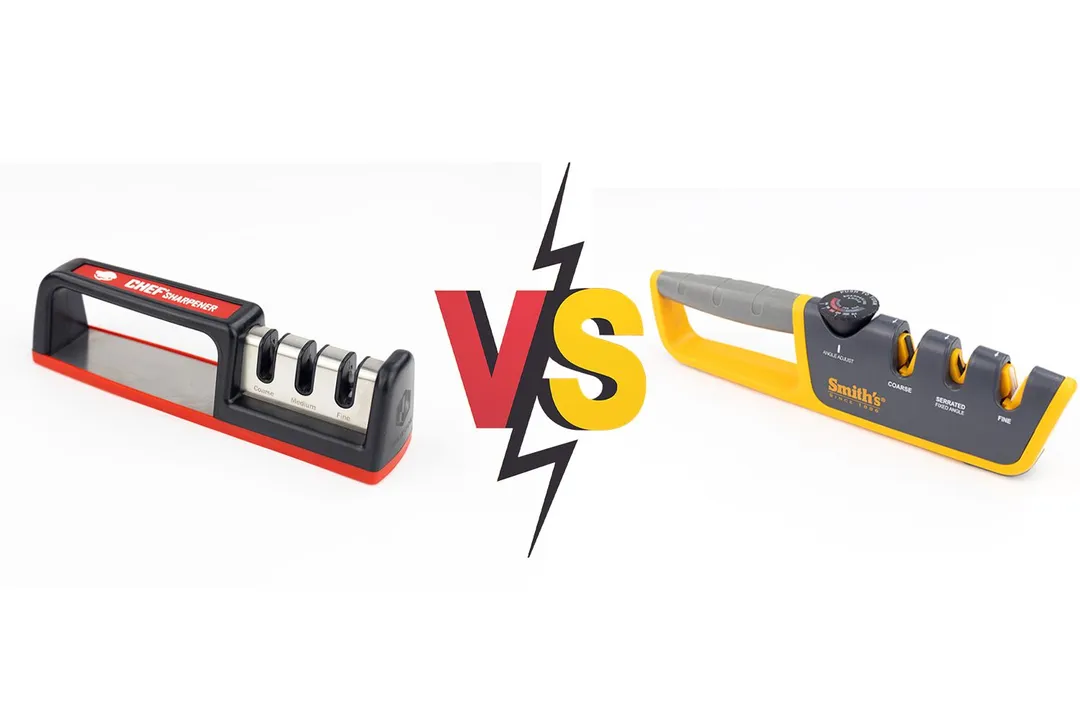
Overall Verdict
The Cubikook Chef’ Sharpener and the Smith's 50264 are built with different philosophies: The former is all about well-roundedness, while the latter sticks to the job of making the knife as sharp as possible.
The Smith’s is tuned for achieving great sharpness. It boasts thick carbide blades that get the job done more quickly and effectively than most others, the Cubikook included. The blades are adjustable to accommodate different grind angles. Unfortunately, they also peel off a great deal of metal from your knife and leave a wavy edge behind.
The Cubikook, meanwhile, strikes a much better balance between sharpness and usability. It features a more solid build, a large, flat base, and low working section, which makes it much safer and more effortless to use. It doesn’t sharpen as quickly as the Smith’s, but it does create a much finer edge and doesn’t remove so much material.
Pros & Cons
- Excellent stability
- Affordable price
- Consistent sharpness
- Solid and sturdy construction
- Angle-adjustable sharpening
- Sharpening slot for serrated blades included
- Wide slot inserts
- Replaceable abrasives (sold separately)
- Small ceramic rods
- Flaky brand label
- Shears off a considerable amount of metal
- Awkward slot structure
- Long, narrow base
Key Specs
Where to Buy
*You help support HealthyKitchen101's product testing and reviews by purchasing from our retail partners.
Analysis and Test Results
Performance
Sharpening Time to Cut a Lemon
Material Retention
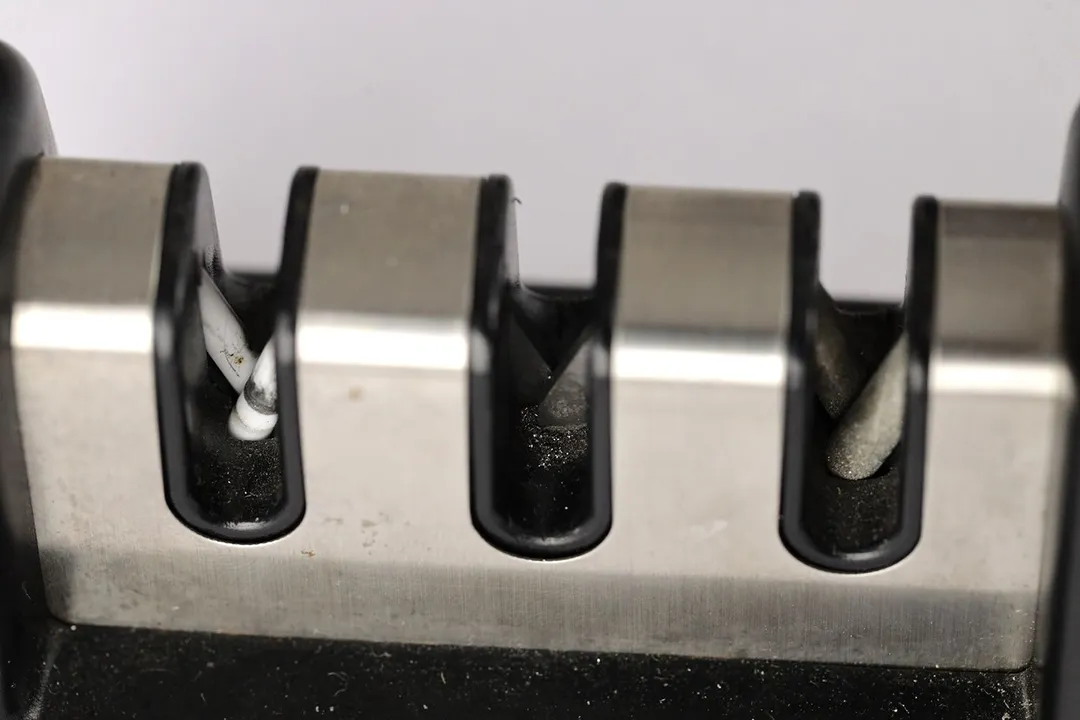
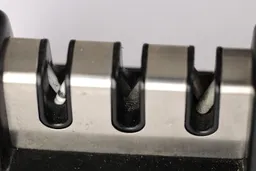

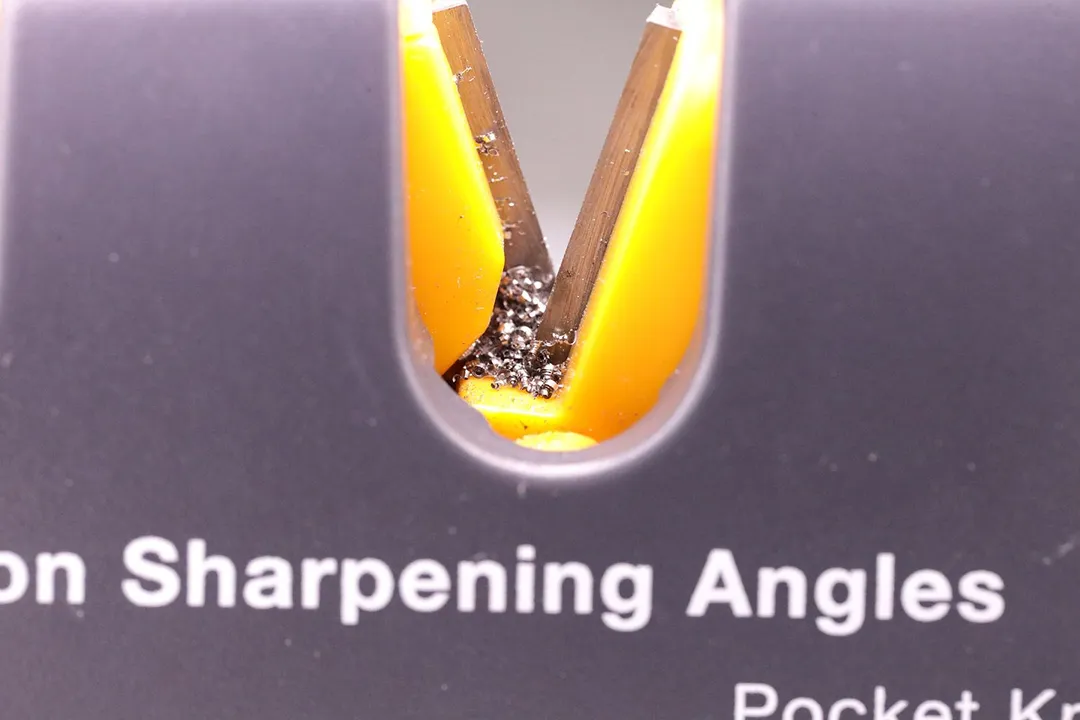

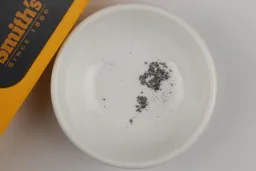
Maximum Sharpness Achieved
Edge Smoothness


Design
In the Box
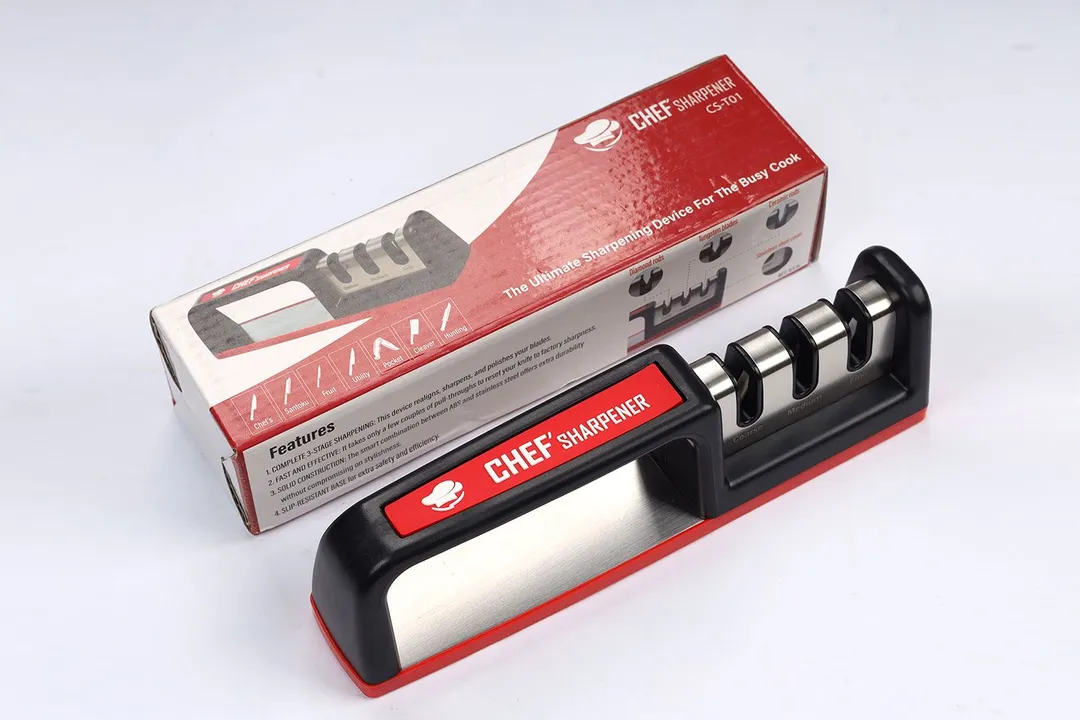
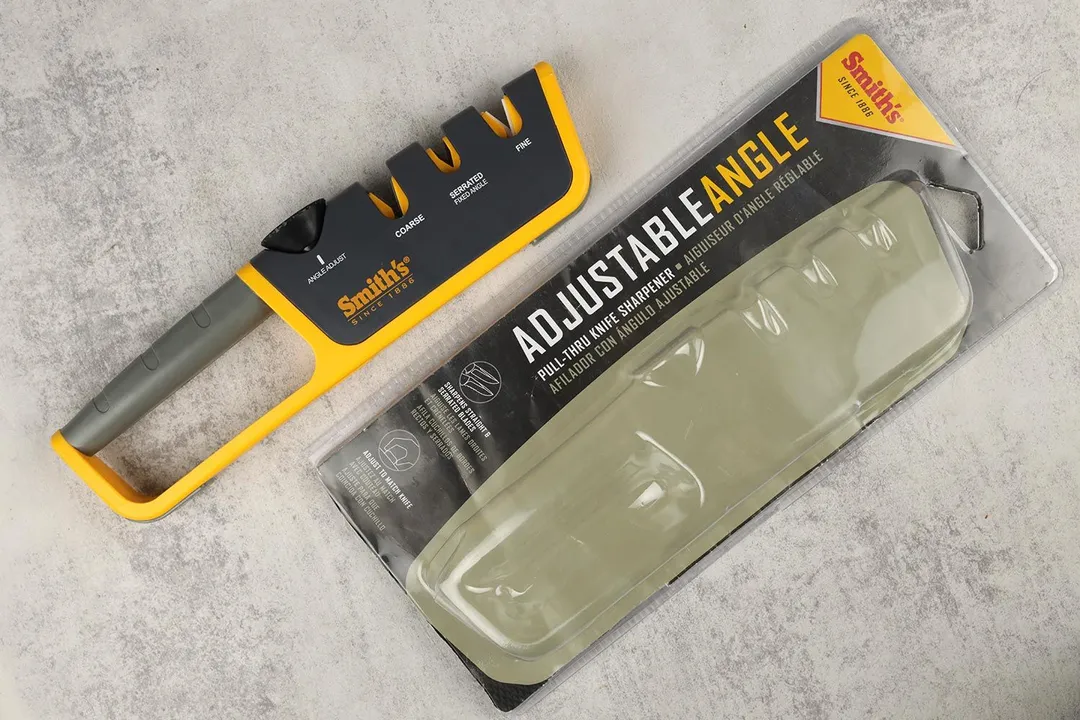
Dimensions
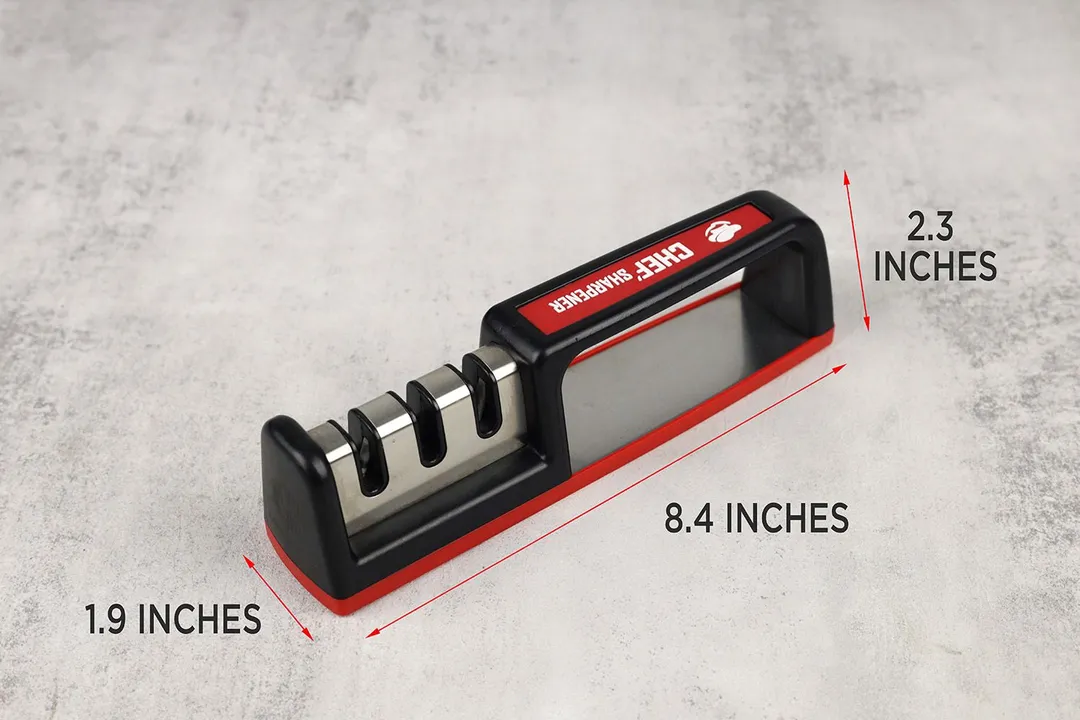
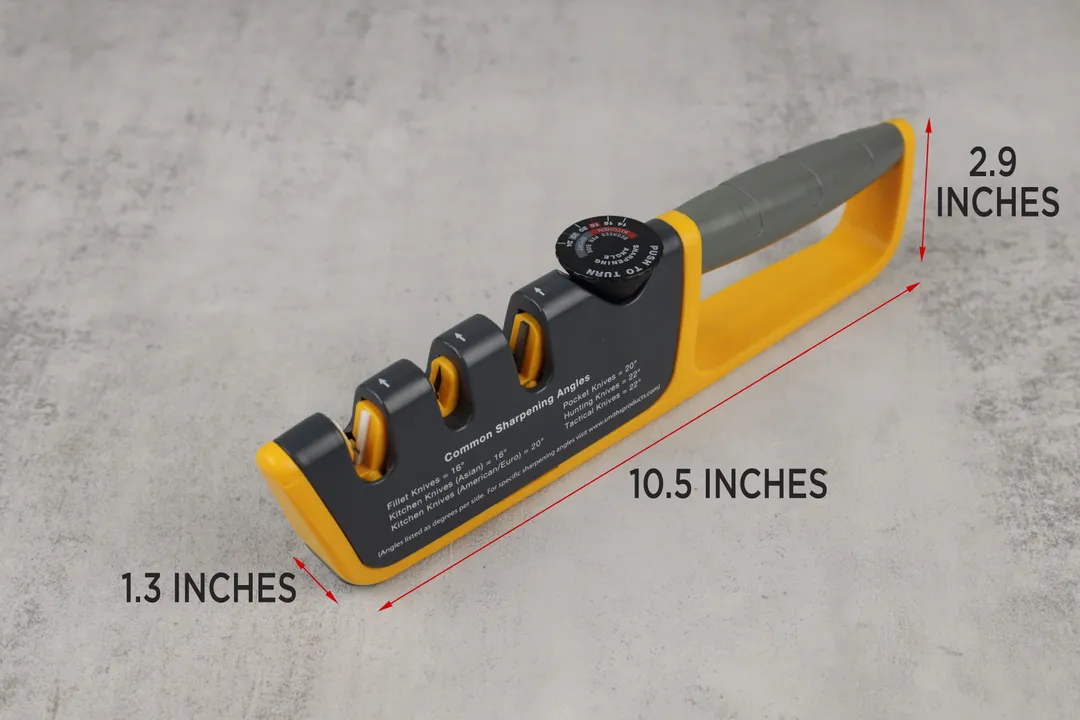
Build Quality
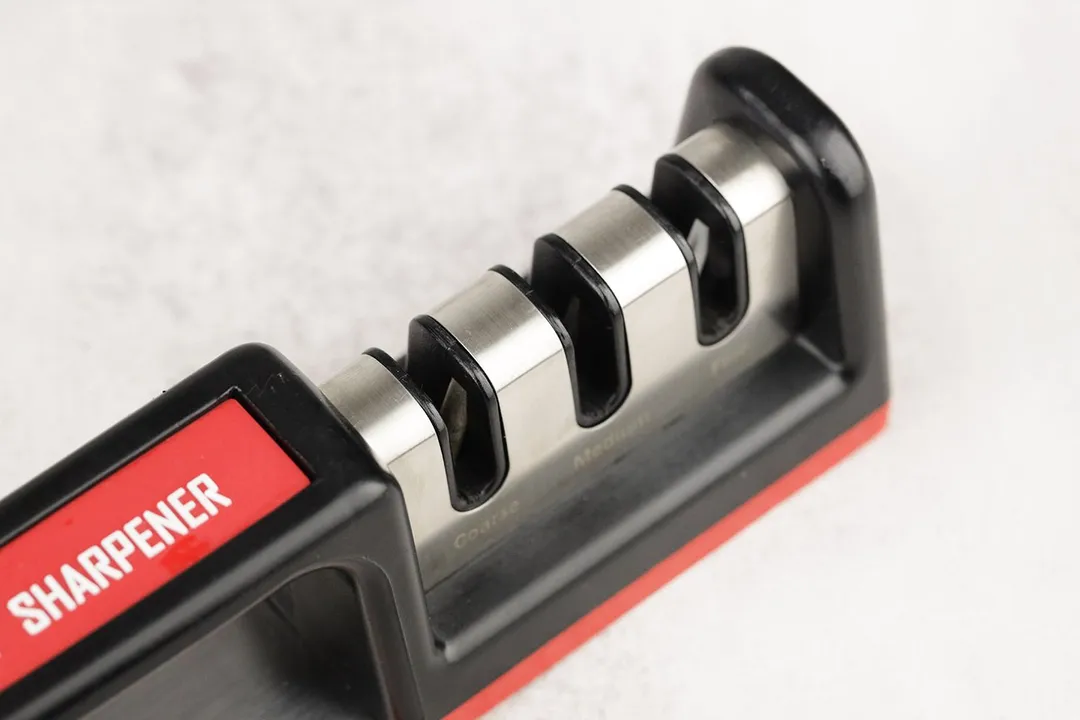
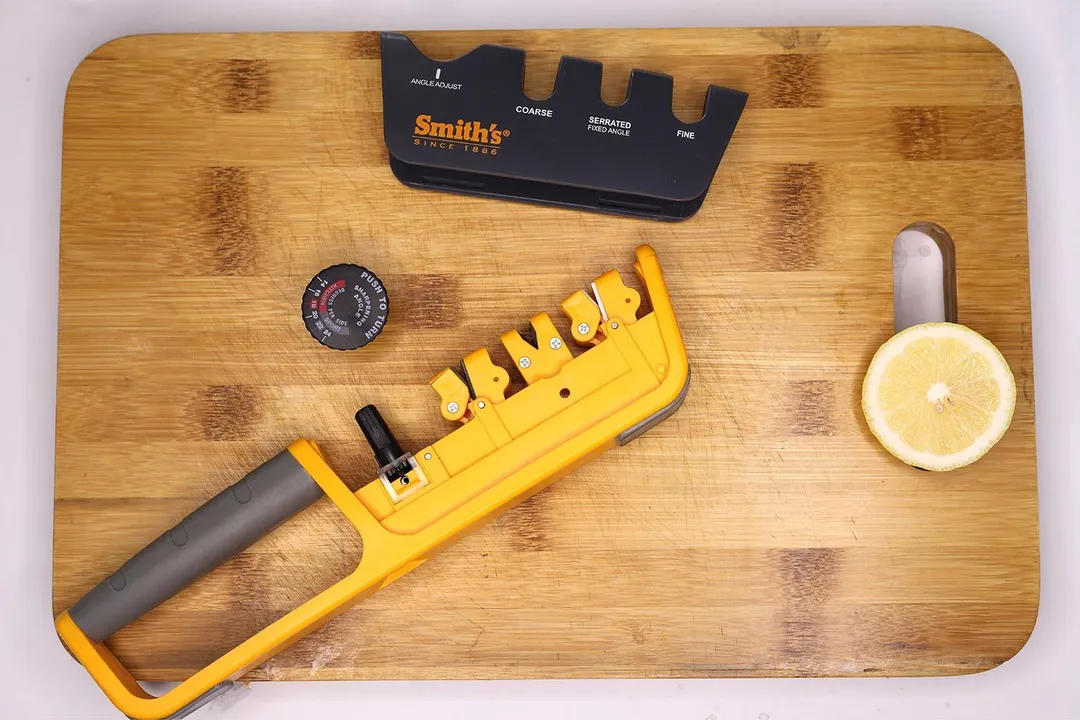
Working Section
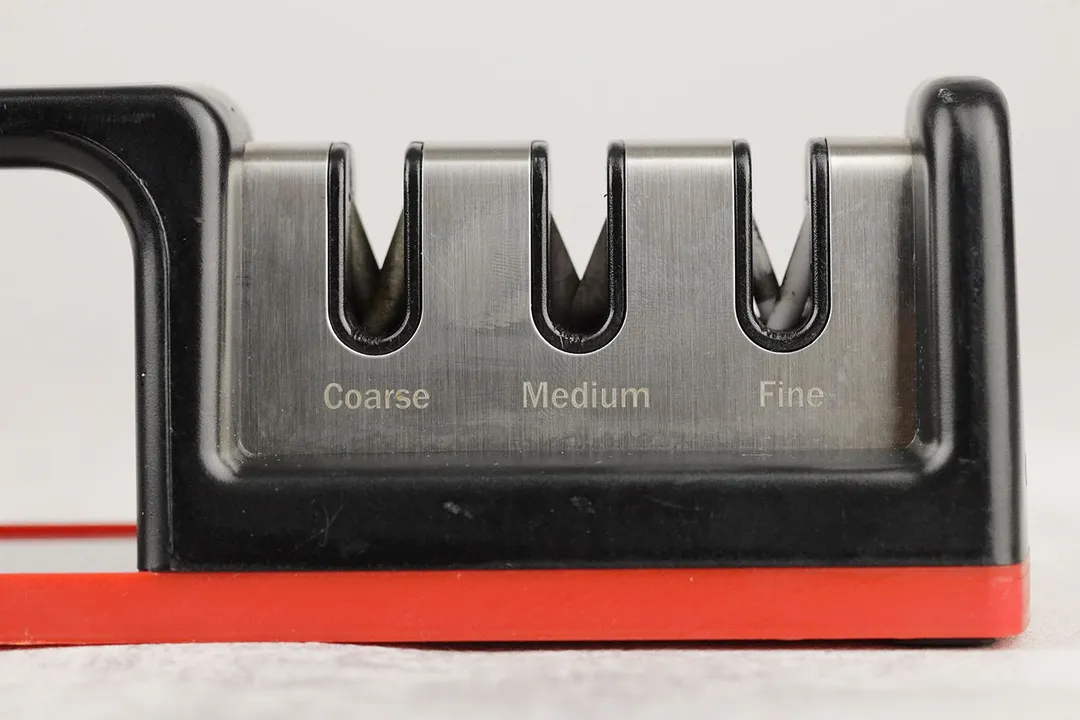
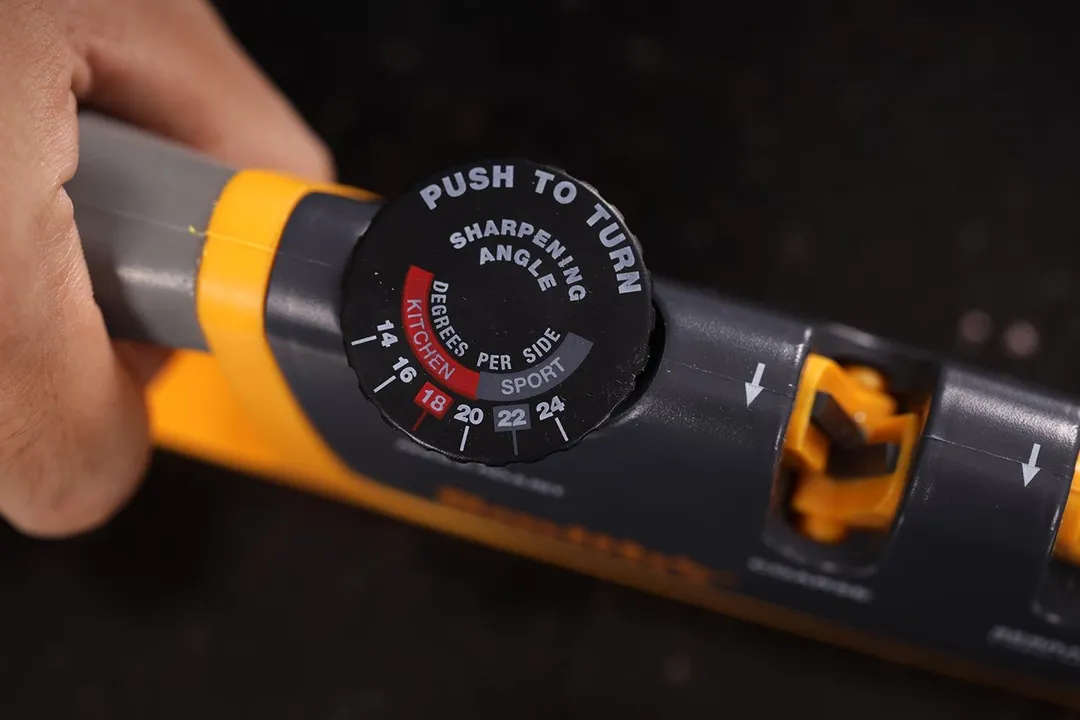
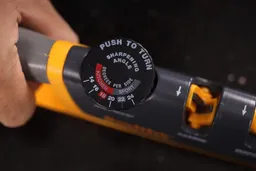

Base

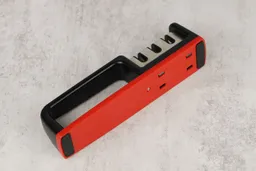
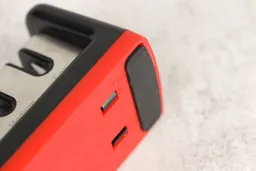
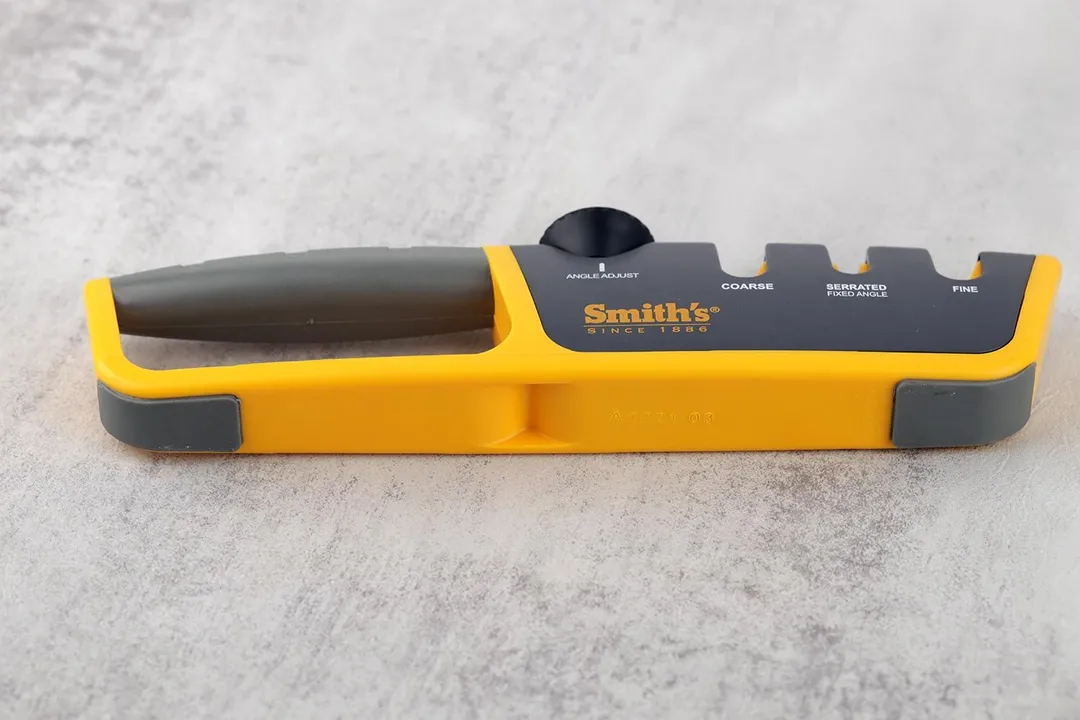
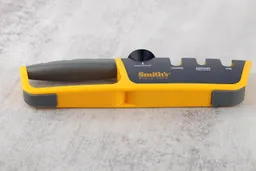
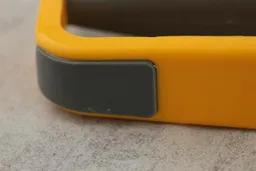
Grip
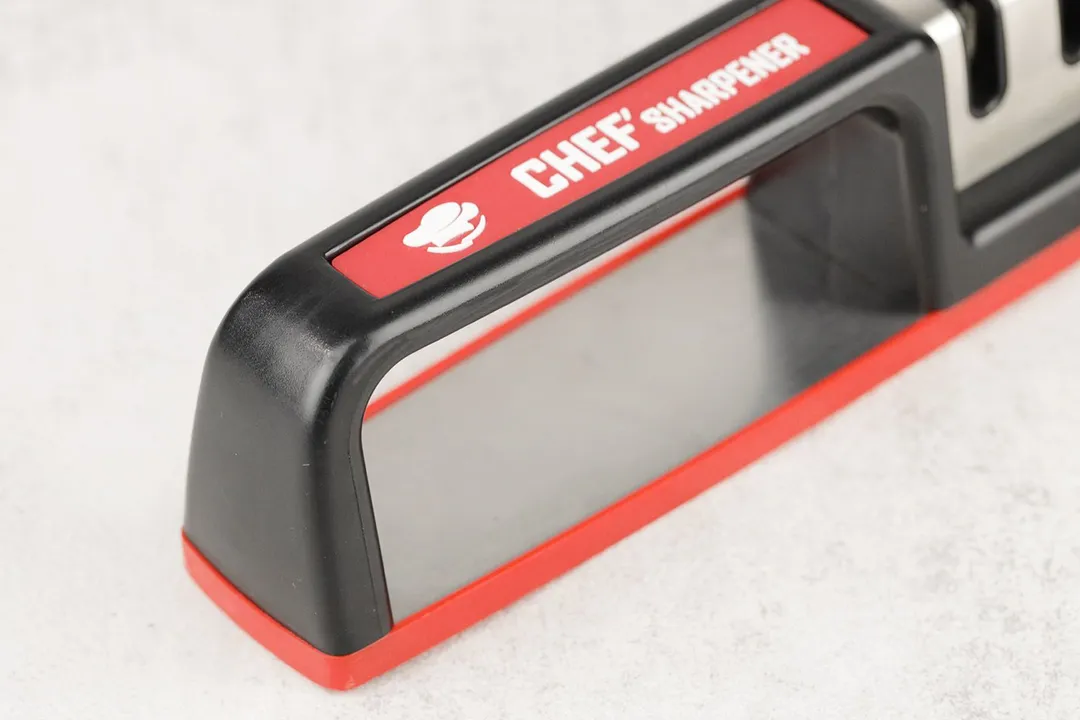
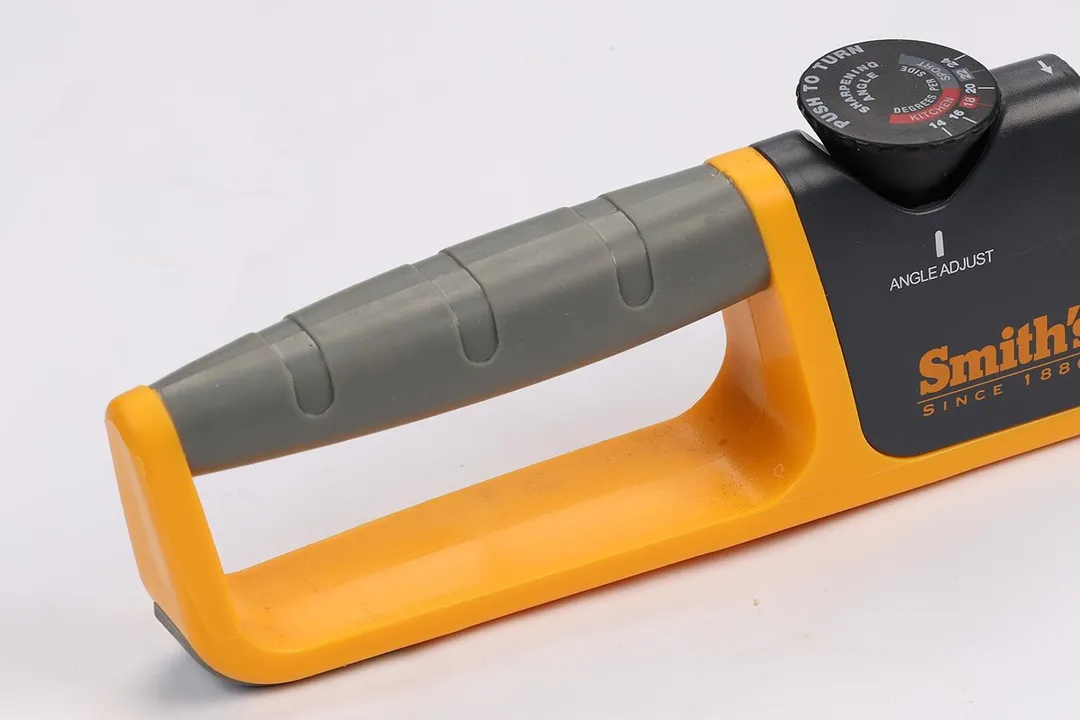
Usability
Slot Arrangement
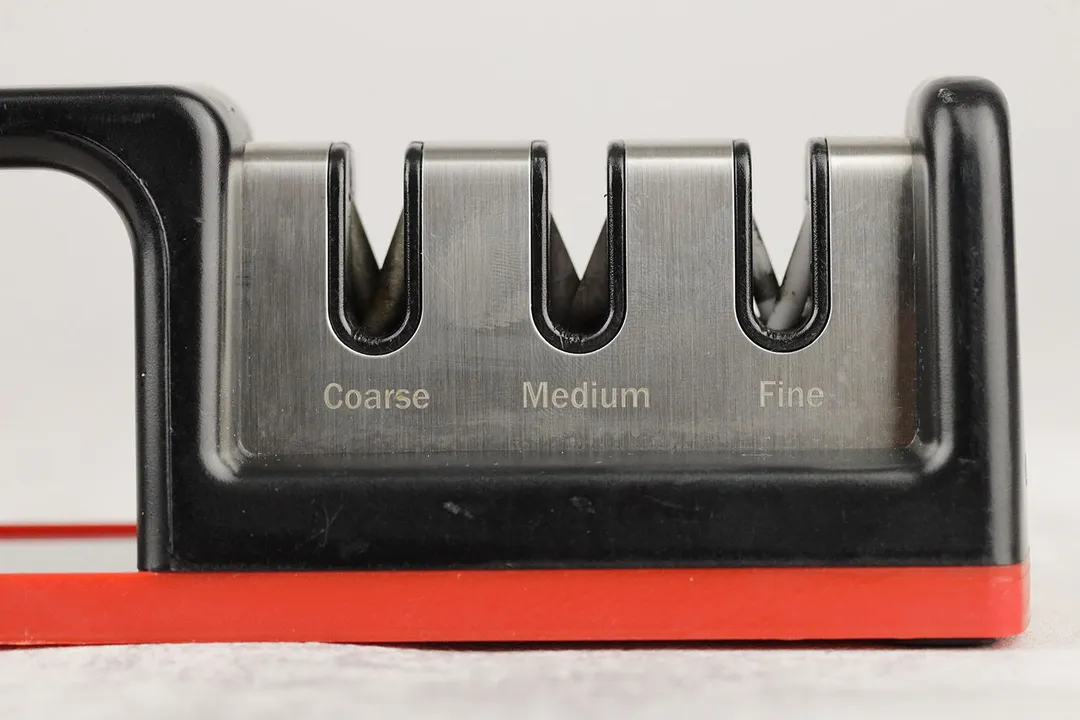
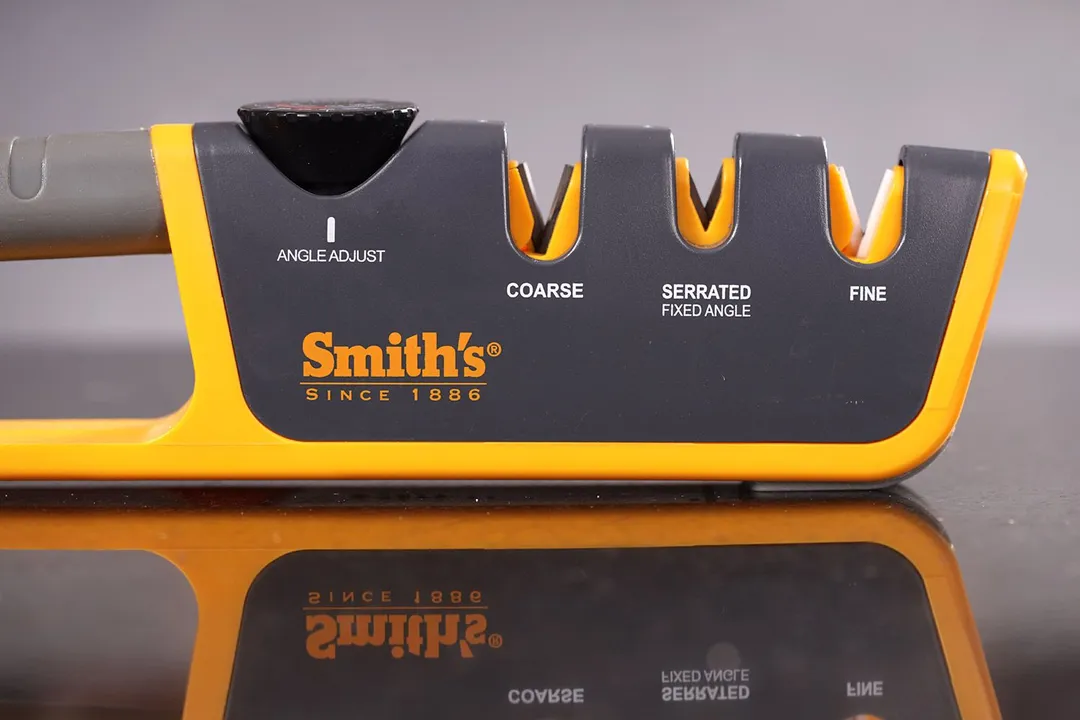
Insertion
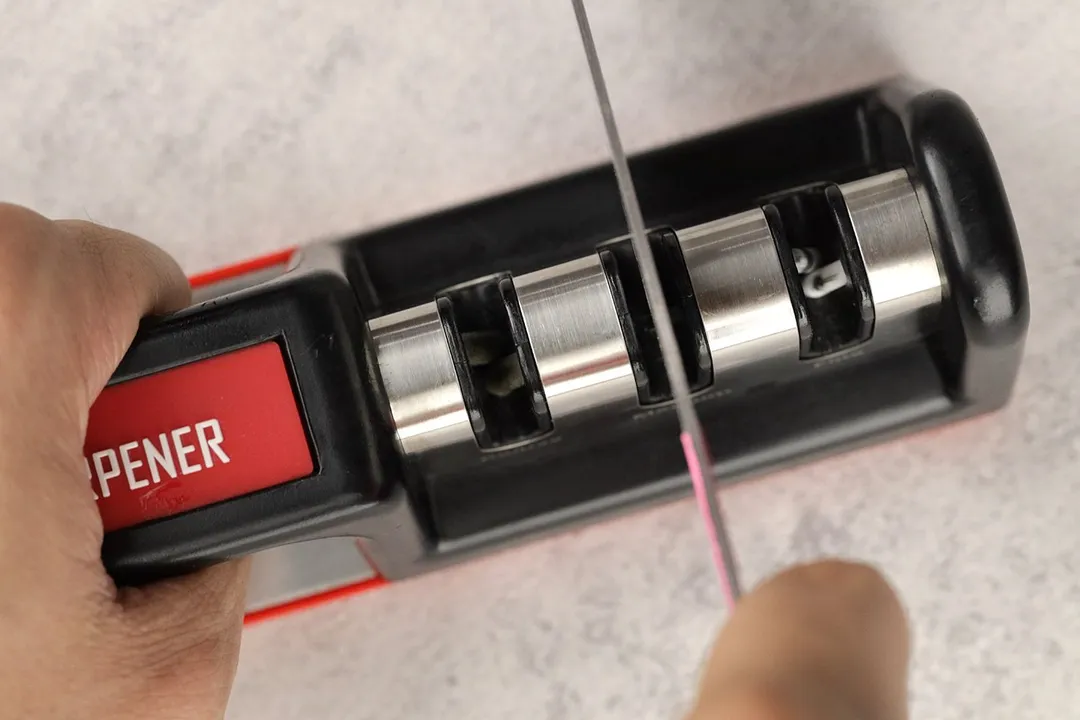
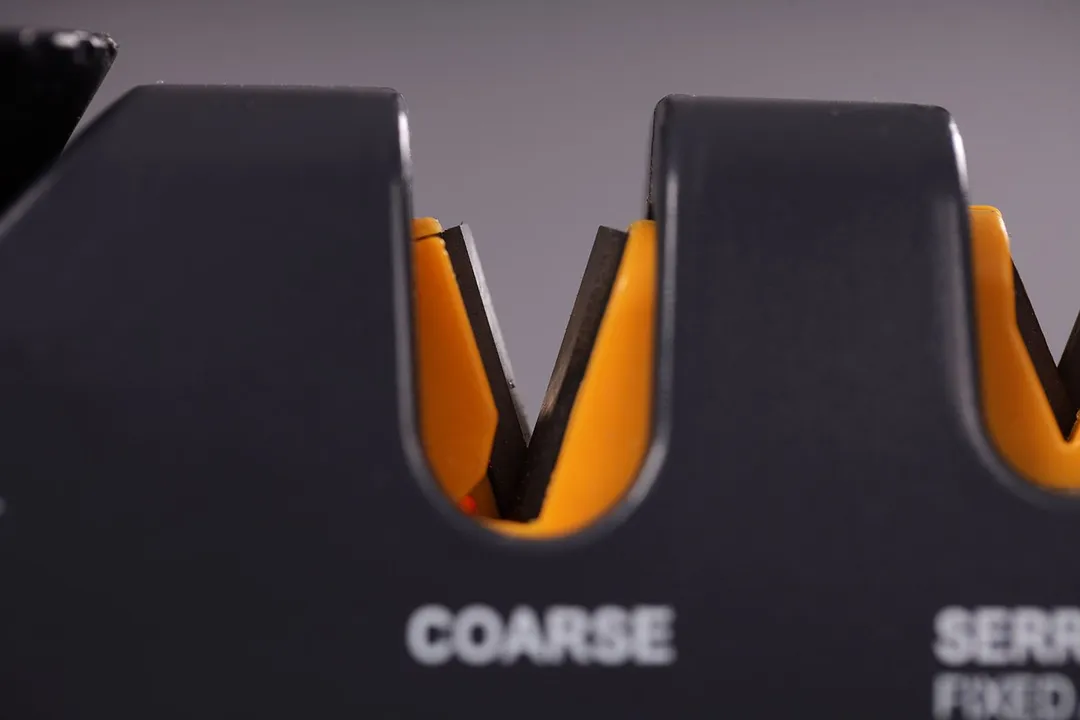
Pulling Through
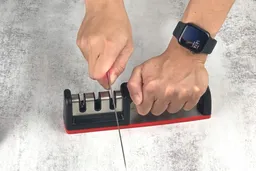
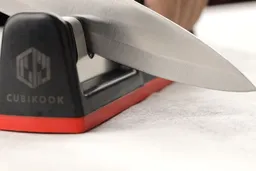

Stability on a Clean Surface
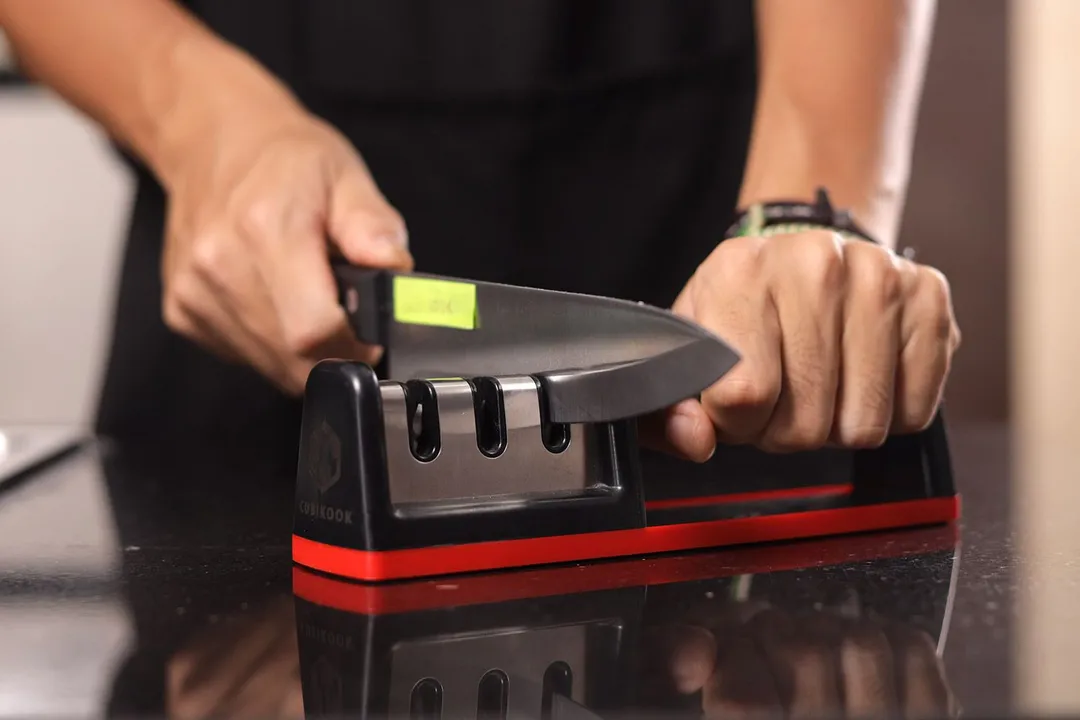
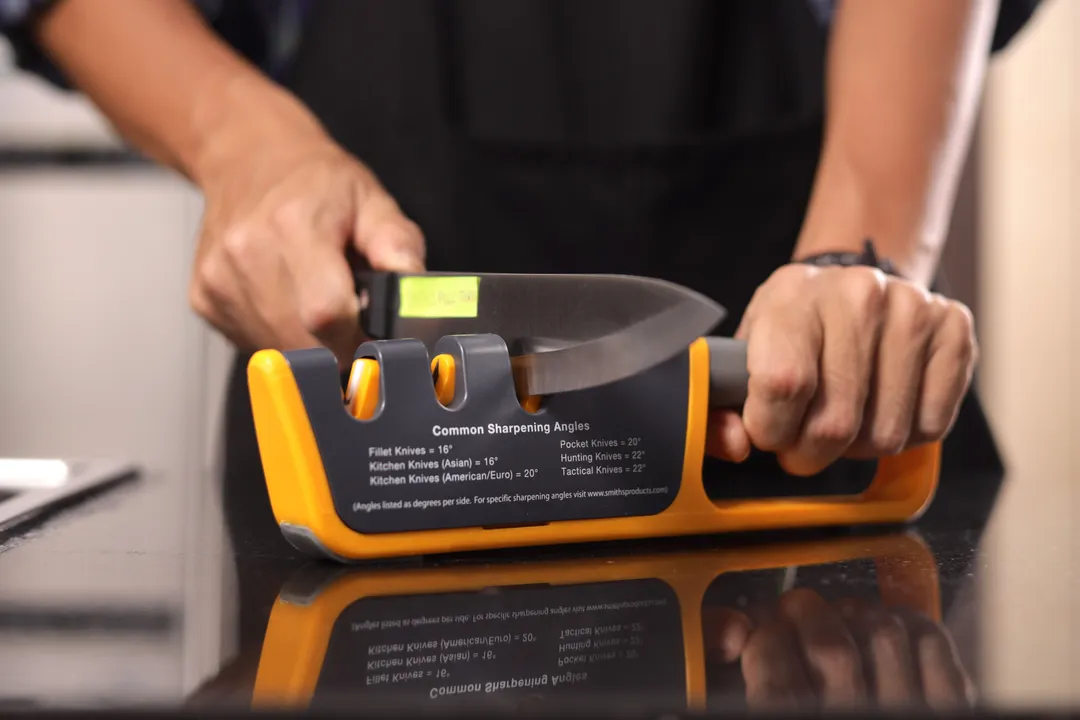
Stability on a Wet and Dirty Surface
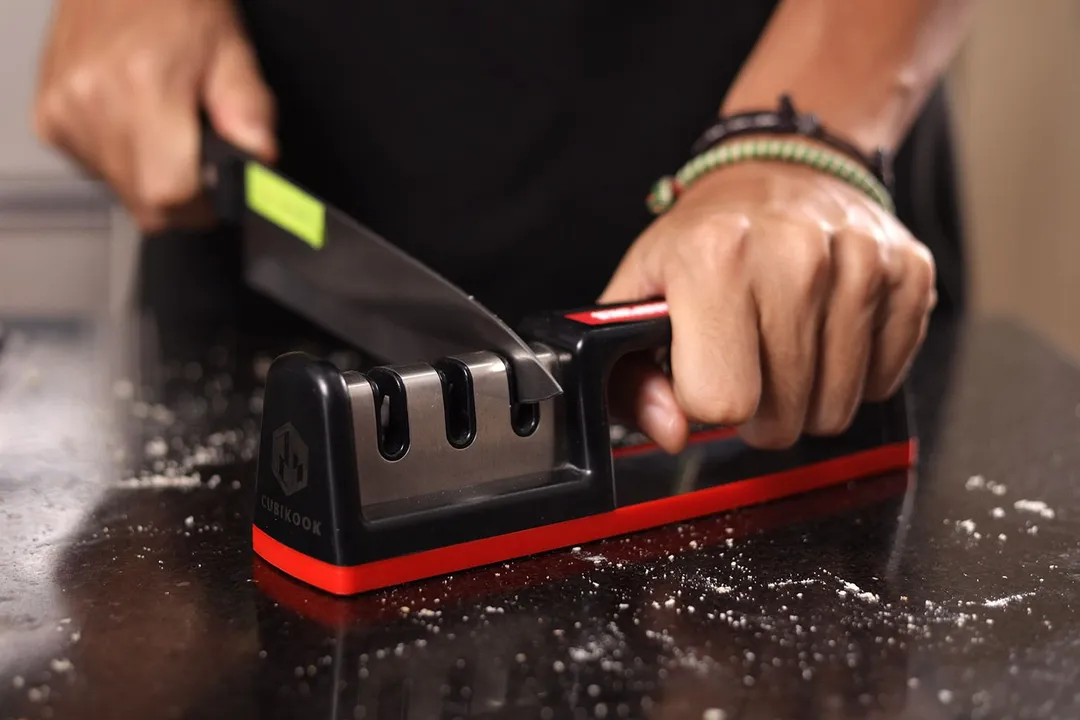
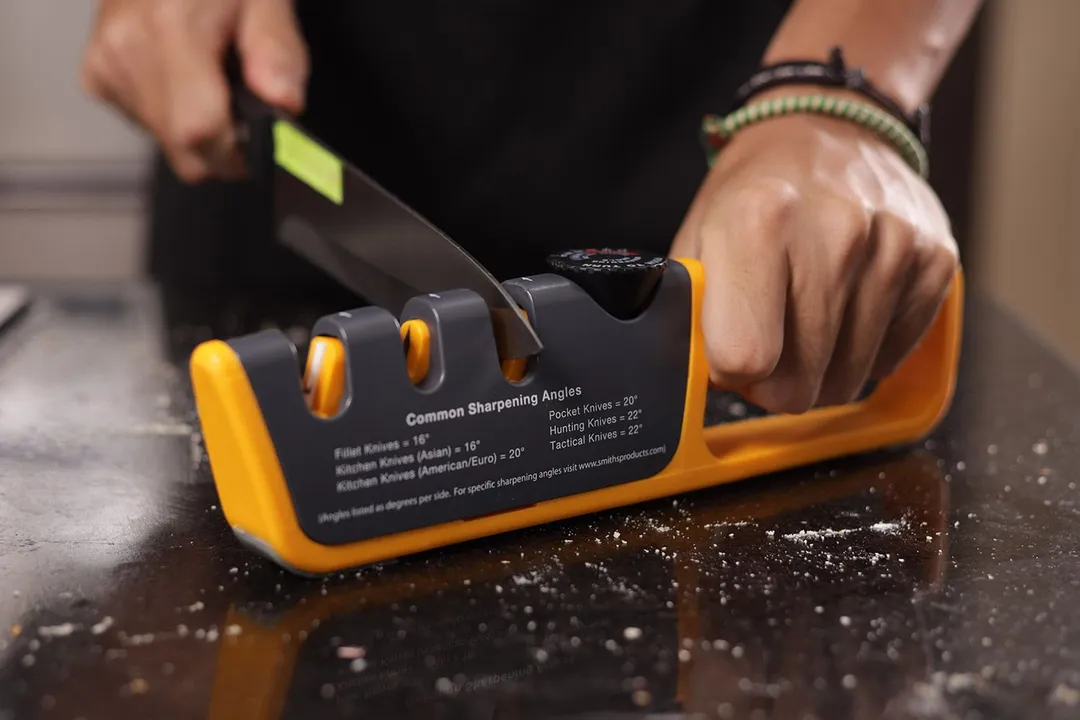
Behind the Comparison
Anh Ngo is a writer with 9 years experience at different media outlets, covering from public news and events to product testing and analysis. At HealthyKitchen101, she works across different departments, communicating closely with its network of writers, editors, and health, tech, and search engine experts to provide a meaningful and pleasant reading experience for visitors.
Lap is Head of the Research, Testing, and Review Team (RTR Team) at HealthyKitchen101.com, where he directs and supervises the testing of kitchen gadgets and appliances.
Nguyen Ntk is a graphic designer, photographer, and videographer whose philosophy centers around respecting and celebrating the beauty of reality. Through his lenses, Nguyen strives to capture the true essence of objects and events, showcasing and highlighting authentic features without distortion or exaggeration.



